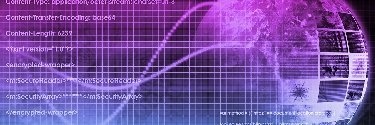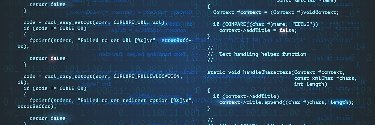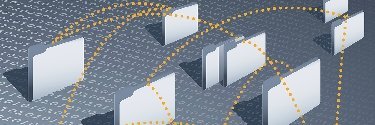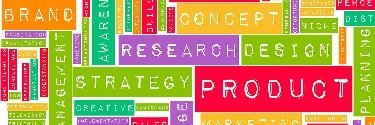Front-end, back-end and middle-tier frameworks
The JDK and core Java APIs provide the plumbing for porcelain frameworks such as Spring Boot, Jakarta EE, Vaading and JavaServer Faces. An enterprise developer must know how the most critical middle-tier, front-end and back-end Java frameworks function. Follow expert software development roadmaps and explore the essential Java frameworks that simplify modern software development.
Top Stories
-
Tip
11 Jul 2025

Spring, Quarkus or Jakarta EE? How to choose a Java framework
Choosing a Java framework is not about which one is best, it's about accepting their tradeoffs of stability, flexibility and complexity. Here's how to evaluate each vs. your needs. Continue Reading
By- Joseph B. Ottinger, EnigmaStation
-
Video
06 Jun 2025

Spring Boot auto-configuration
Ever wondered how Spring Boot knows how to automatically configure a MySQL database or Kafka queues? This quick tutorial on the @AutoConfiguration annotation explains how it works. Continue Reading
By- Cameron McKenzie, TechTarget
-
Video
29 Jul 2020

How JPA EntityManager handles Hibernate transaction management
Follow this JPA EntityManager persist example tutorial to see how it can be used for transaction management and how to save changes to the database. Continue Reading
By- Cameron McKenzie, TechTarget
-
Video
26 Jun 2020

3 ways to have JPA and Hibernate create tables in a database
JPA frameworks such as Hibernate can automatically create tables. Here are three ways to have JPA and Hibernate create tables in a database. Continue Reading
By- Cameron McKenzie, TechTarget
-
Video
25 Jun 2020

Simple database integration with the JPA persistence.xml file
The persistence.xml file plays a significant role in all facets of JPA-based application development. Examine the file's properties for a simple configuration to ease development. Continue Reading
By- Cameron McKenzie, TechTarget
-
Video
12 Jun 2020

Create a distraction free JPA and Hibernate dev environment
A minimalistic approach is the way to go for development with Hibernate and JPA. Create a development environment with only the basics -- a JDK, Hibernate and a text editor -- to get started. Continue Reading
By- Cameron McKenzie, TechTarget
-
Feature
19 Mar 2020

6 top webpage performance metrics to monitor
Webpage performance is paramount for digital success. To monitor webpage performance, use these top six metrics. Continue Reading
By- Cameron McKenzie, TechTarget
-
News
18 Mar 2020

GitHub's NPM acquisition sparks Microsoft-related worries
GitHub's acquisition of NPM will bring two prominent open source players together under the Microsoft umbrella. But moves like this tend to cause concern for some observers. Continue Reading
-
Feature
28 Feb 2020

Take advantage of these 5 benefits of server-side rendering
From performance improvements to browser compatibility, here are five reasons why you should use server-side rendering technologies in your next web project. Continue Reading
By- Cameron McKenzie, TechTarget
-
Tip
25 Feb 2020

CSS performance optimization in 5 easy steps
Here are five CSS performance tips to help you avoid website performance problems. Continue Reading
By- Cameron McKenzie, TechTarget
-
Definition
17 Feb 2020

HTML (Hypertext Markup Language)
HTML (Hypertext Markup Language) is a text-based approach to describing how content contained within an HTML file is structured. Continue Reading
By- Ben Lutkevich, Site Editor
-
Feature
24 Jun 2019

4 great Java-based CMS options
Open source Java CMS tools come in a wide variety of shapes and sizes. Explore these four platforms to see if they would be a match for your enterprise. Continue Reading
By -
Video
10 Apr 2019

Follow this Java screen scraper example to aggregate content
Follow this JSoup example of screen scraping to aggregate data from live webpages, and generate results that can be easily identified and organized. Continue Reading
By- Cameron McKenzie, TechTarget
-
Feature
20 Feb 2019

Convert JPEG to SVG to improve webpage performance
Vector images open the door for multiple benefits on HTML webpages. Consider SVGs instead of raster images to boost HTML speed and improve overall image clarity. Continue Reading
By- Gail Mackenzie, Xennial Consulting Inc.
-
Tutorial
11 Dec 2018

Avoid boilerplate code with this typable Spring beans tutorial
Java is always criticized for being bloated. But there are ways to minimize all the fill-in code. This Spring beans tutorial shows you how to write more efficient applications. Continue Reading
By- Mark Spritzler, Perfect World Programming
-
Feature
01 Sep 2018

New CDNs bring edge JavaScript to the app performance world
With content distribution networks loaded with edge JavaScript, Cloudfare promises to improve application performance and reducing resource consumption. Continue Reading
-
Feature
27 Jul 2018

Meaning of inversion of control in Spring and Java: IoC explained
What is inversion of control, and why has inversion of control in Spring and Java become such a core development concept? Continue Reading
By- Cameron McKenzie, TechTarget
-
Video
26 Jul 2018

Step-by-step Spring Boot RESTful web services example in Java using STS
In a previous tutorial, we explained the basic tenets of good RESTful web service design. In this step-by-step Spring Boot restful web services example, we implement it. Continue Reading
By- Cameron McKenzie, TechTarget
-
Tutorial
30 Jun 2018

Spring MVC tutorial: How Spring Boot web MVC makes Java app development easy
Spring Boot has provided an opinionated approach to developing microservices. In this Spring MVC tutorial, we show how Spring Boot has changed Java web development as well. Continue Reading
By- Cameron McKenzie, TechTarget
-
Tip
17 Apr 2018

How JPA and Hibernate simplify data persistence
JPA is the Java standard for data persistence, especially for relational systems. Here, we explore how Hibernate and JPA work together to make database processes easier. Continue Reading
By -
Feature
16 Apr 2018

The best web programming languages for development
Many technologies have emerged to facilitate browser-based development. Here, we look at those technologies in an effort to identify the best web programming languages of today. Continue Reading
By -
Tip
22 Mar 2018

A side-by-side comparison of MongoDB vs Cassandra databases
How do you choose one NoSQL database over another? Expert Christopher Tozzi explains the difference between MongoDB and Cassandra. Continue Reading
By -
Feature
30 Jan 2018

What happened to Java in 2017? Here's a comprehensive list
Java developers face new technology challenges regularly, but in 2017, the bar was raised. We've rounded up our top 10 Java stories from 2017 in case you missed anything. Continue Reading
By- Ryan Dowd, Associate Site Editor
-
Tutorial
16 Jan 2018

What Java developers need to know about TypeScript syntax
For Java developers transitioning into JavaScript frameworks, like React and Angular, this TypeScript tutorial on syntax will help make the transition easier. Continue Reading
By- Cameron McKenzie, TechTarget
-
Tip
08 Dec 2017

What's the best image optimization for web and mobile apps?
When it comes to images and application development, the optimization opportunities are endless. Expert George Lawton outlines the choices and the challenges. Continue Reading
-
Podcast
03 Oct 2017

How Java EE Security and MVC 1.0 simplify Java microservices
Once the decision has been made to use containers and microservices, it's good to know that MVC 1.0 and the Java EE Security API will make the development process much easier. Continue Reading
By- Cameron McKenzie, TechTarget
-
Feature
16 Aug 2017

How a data cache can solve your JavaScript performance problems
There are many barriers to improved web application performance, but using a data cache effectively can break down many of those performance barriers. Continue Reading
-
Feature
09 Aug 2017

How Pandora built a better recommendation engine
Find out how Pandora developed an AI application for building a better recommendation engine that combines novelty and comfort. Continue Reading
-
Feature
25 Jul 2017

React and Angular frameworks speeding up JavaScript performance
New JavaScript frameworks, like React and Angular, are changing the way web and mobile UIs are developed, with performance being one of their strongest traits. Continue Reading
-
Feature
25 Jul 2017

Will voice user interfaces usurp the traditional UI?
It would appear that innovation has stalled in terms of mobile and desktop user interfaces, which is why voice user interfaces might be the future for application interactions. Continue Reading
-
Opinion
01 Jun 2017

Standardized data the key to making cloud storage a commodity
Wouldn't it be nice if accessing cloud storage solutions were as easy as plugging in a toaster? Standardized data is the key. Cloud storage as a commodity is the future. Continue Reading
By- David Friend, Wasabi
-
Feature
07 Mar 2017

Big data recognition technology the next frontier for machine learning
It's one thing to have big data, but it's another to be able to understand it. That's why big data recognition technology is so important to the world of machine learning. Continue Reading
By- Daisy McCarty, Brand Message Clarity
-
Feature
06 Mar 2017

Applying data science to doc migrations brought sense to the City of LA
When the city of LA was burdened with antiquated systems of sharing information, data science was applied and doc migrations performed. Continue Reading
By- Daisy McCarty, Brand Message Clarity
-
Feature
16 Jan 2017

Web application performance tips from the wolves on Wall Street
If you are having web application performance problems, here are some tips from the IT experts working Wall Street. Continue Reading
-
Feature
22 Dec 2016

Collaboration and community the key to DevOps success in 2017
What is the best way to ensure DevOps success in 2017? Most experts agree that community and collaboration play a key part. Continue Reading
By -
Podcast
03 Nov 2016

IoT data consumption a key challenge in edge device scalability
IoT devices can be most unfriendly -- from cheap components to bad sensors -- which means handling, consuming and processing IoT data is a key to edge device scalability. Continue Reading
By- Cameron McKenzie, TechTarget
-
Feature
25 Oct 2016

JavaScript framework AngularJS continues to simplify UI development
The easiest way to simplify UI development? Use a powerful JavaScript framework like AngularJS. Continue Reading
-
Podcast
22 Jul 2016

Apache Arrow to revolutionize big data analytics performance
Apache Arrow will not only improve the performance of your big data analytics engines, but it will make system interoperability more efficient as well. Continue Reading
By- Cameron McKenzie, TechTarget
-
News
17 Jun 2016

Apache Spark streaming analytics engine key to integrating big data
Learn how a variety of improvements to the open source Apache Spark streaming analytics engine promises to improve the development of big data applications. Continue Reading
-
Tutorial
09 Jun 2016

Apache Drill case study: A tutorial on processing CSV files
Rob Terpilowski decided to take Apache Drill for a test drive and use it for processing CSV files. Here's a quick tutorial to show how you can do it to. Continue Reading
By- Rob Terpilowski
-
Tutorial
25 May 2016

Portlet tutorial: Defining and namespacing JavaScript objects
A great deal of frustration can ensue when referencing JavaScript objects within a portlet. Defining a namespacing JavaScript component properly will help avoid that. Continue Reading
By- Sal Pece
-
Feature
25 May 2016

A technical expert's guide to software product design
When initiating a new project, there are a number of dos and don'ts when it comes to software product design you need to be aware of. Continue Reading
-
Tutorial
23 May 2016

Portlet filters and Spring tutorial
Working with a complex product like WebSphere, it helps to integrate a lightweight framework. This portal and Spring tutorial demonstrates how to use portal filters with Spring. Continue Reading
By- Sal Pece
-
News
21 Apr 2016

Identifying where big data apps make sense today
Developers can gain an advantage from identifying the most common use cases of big data apps today. Here, expert George Lawton offers three different things to keep in mind. Continue Reading
-
News
08 Apr 2016

Designing Web apps and Web UIs for software developers
Interested in designing Web apps? Here are some UX design tips that will garner them great feedback when they finally test the Web UIs they develop. Continue Reading
-
Feature
01 Apr 2016

Moving beyond the virtualization tool with DevOps containers
Virtualization has been a pivotal tool for organizations wanting to simplify both development and operations, but DevOps is now moving beyond the VM with DevOps containers. Continue Reading
By -
Feature
23 Mar 2016

Choosing the right big data analysis tools
In order to choose the right big data analysis tools, it’s important to understand the transactional and analytical data processing requirements of your systems and choose accordingly. Continue Reading
By -
News
22 Mar 2016

Reactive programming is all the rage at Fluent 2016
Find out why Microsoft's Matthew Podwysocki said he believes good reactive programming means developers embrace the Observable design pattern and create reliable, asynchronous systems. Continue Reading
-
News
17 Mar 2016

Why NoSQL databases are getting replaced
NoSQL databases have gained popularity by solving problems at which relational databases fail. Now graphing engines are solving the problems that are too tough for NoSQL. Continue Reading
-
Feature
26 Feb 2016

In JDK 9, the Java browser plug-in will be a thing of the past
In the version 9 release of JDK, Oracle will finally drop the Java browser plug-in, and nobody is shedding a tear over it. Continue Reading
By- Cameron McKenzie, TechTarget
-
Tip
22 Feb 2016

Five tips for choosing a UI development framework
Choosing a UI development framework is one of the most difficult decisions a software architect must make. Here are five things to look for when picking a development framework. Continue Reading
By- Cameron McKenzie, TechTarget
-
Feature
10 Feb 2016

Why LinkedIn doesn't deliver as a social media network for professionals
While Facebook made sharing with family and friends a joy, LinkedIn has filed to make social networking for professionals fun. Here's what's wrong with LinkedIn. Continue Reading
By- Cameron McKenzie, TechTarget
-
Tutorial
21 Jan 2016

How to integrate Spring Cache with an In-Memory Data Grid (IMDG)
Interested in combining the efficiencies of Spring Cache with the power of an In-Memory Data Grid (IMDG). This simple tutorial demonstrates just how easy the process is. Continue Reading
By- Frank Kamran
-
Feature
14 Dec 2015

A Google promise to be fulfilled: Good emulators for Android developers
One of the biggest challenges in developing Android applications is the frustration of working with slow and unresponsive emulators. At Google's Android Dev Summit, a promise has been made to fix that. Continue Reading
By- Barry Burd, Drew University
-
Tip
27 Aug 2015

Hortonworks optimizes Apache Hadoop performance
Hortonworks has recently introduced new products to help enhance Apache Hadoop performance. Continue Reading
By- Cameron McKenzie, TechTarget
-
Podcast
25 Aug 2015

The latest trends in the Hadoop project
In this podcast, Tim Hall of Hortonworks discusses the Apache Hadoop project and how it has changed since its inception. Continue Reading
By- Cameron McKenzie, TechTarget
-
Tip
04 Aug 2015

A new HTTP protocol eases server-side development
The HTTP protocol is finally getting its first major overhaul, bringing a number of improvements to managing the connections between servers and users. Continue Reading
-
Podcast
30 Jul 2015

Beat performance monitoring hurdles in single-page interface world
This podcast discusses how frameworks like AngularJS have simplified the creation of single-page interface applications, but have created new performance monitoring challenges. Continue Reading
By- Cameron McKenzie, TechTarget
-
Feature
07 May 2015

A new approach to condensing data leads to a 99% compression rate
Given the enormous thirst for data, coupled with the finite existence of copper and fiber optic cables that link clients and servers together, the need for powerful compression algorithms is self-evident. Has XLABS solved the problem with a 99% rate? They just may have. Continue Reading
-
Tutorial
04 May 2015

How to invoke a JSF managed bean asynchronously through JavaScript
Sometimes great frameworks like JSF, Wicket or Spring MVC make simple tasks surprisingly difficult to do. With JavaServer Faces, the simple task of invoking a method on a managed bean is actually a bit of a chore. In this tutorial, we tackle that chore together. Continue Reading
By- Cameron McKenzie, TechTarget
-
Tip
22 Apr 2015

Bridging the gap between WebRTC, VoIP and phones
The WebRTC protocol has shown great promise for integrating telephony capabilities into modern enterprise applications. But challenges remain. Continue Reading
-
Podcast
31 Mar 2015

Inside the portal arena with Liferay
Learn about the front facing portal applications happening at Liferay in this interview with TSS and Ray Auge of Liferay. Continue Reading
By- Cameron McKenzie, TechTarget
-
Tip
30 Mar 2015

Migrating a website without the migraines
Given all that's involved, migrating to a new website can be challenging. Here is a checklist to follow that can help lead you to a smooth transition. Continue Reading
By- James Min
-
Podcast
09 Mar 2015

What we can expect from Hibernate OGM and data persistence in 2015
Emmanuel Bernard discusses the Hibernate OGM project and how it has progressed since it was initially envisioned back in 2011. Continue Reading
By- Cameron McKenzie, TechTarget
-
Podcast
17 Feb 2015

Discussing Aerospike at DeveloperWeek 2015
Aerospike's developer discusses how the NoSQL database recently moved its IP to open source at DeveloperWeek 2015. Continue Reading
By- Cameron McKenzie, TechTarget
-
Feature
30 Jan 2015

Growing the demand for NoSQL technology, and non-relational solutions
While relational databases have been the stalwart of enterprise computing, more and more organizations are looking at NoSQL solutions that will free them from many of the constraints of a relational database system. Continue Reading
By- Rene Garrison
-
Feature
30 Jan 2015

AngularJS: A JavaScript framework built with software testing in mind
Modern development methodologies rely heavily on testing and testing frameworks. Of course, testing frameworks are quite mature in the Java and .NET world, but they have been nascent in terms of JavaScript. Here's what's new in the world of JavaScript testing. Continue Reading
By -
Feature
21 Jan 2015

From the mobile browser to the cloud: The expanding role of JavaScript
While originally a language confined just to the web browser, JavaScript has become a requirement for server-side developers as well, as its use in cloud based and mobile applications has become more prevalent and important than ever. Continue Reading
By -
Tutorial
15 Jan 2015

Step-by-step guide to Android development with Eclipse
Learn how to create applications in an Android development environment in this guide. Continue Reading
By- Hamid Raza
-
Feature
25 Aug 2014

Comparing of the cloud storage Titans: Amazon S3 versus Microsoft Azure
There are many vendors out there fighting for your cloud based storage space, with the two biggest being Microsoft Azure and Amazon's S3 offering. Here we compare the two to help you figure out which cloud storage solution is right for you. Continue Reading
-
Tutorial
20 Jul 2014

Creating pages based on a JSF template: Using the Facelets ui:define tag
What do you do once you've set up a handsome page template using the Facelets functions that come with JSF 2.x? Well, you start creating new pages, meshing those ui:define tags in with ui:composition and ui:insert. It's easier than it sounds, trust me. Continue Reading
By- Cameron McKenzie, TechTarget
-
Tutorial
30 Jun 2014

Adding the MBean to the JMX server
Part two of this tutorial delves into how and why to add MBean to the JMX server. Continue Reading
By- Rob Terpilowski
-
Tutorial
27 Jun 2014

Configuring VisualVM to connect to the app server
Learn how to configure VisualVM in part three of this tutorial. Continue Reading
By- Rob Terpilowski
-
Tutorial
24 Jun 2014

Monitor your Web applications using JMX and Spring
Learn how to use JMX and Spring to monitor new Web application projects. Continue Reading
By- Rob Terpilowski
-
Feature
23 Jun 2014

How Amazon tools are solving Big Data problems with Big Data Analytics
Companies are amassing data on a massive scale these days, and new tools are need to bring Big Data Analytics to the Big Data systems many organizations are maintaining. Here we look at how Amazon and various AWS offerings are helping to do big data analysis on big data solutions. Continue Reading
By- Cameron McKenzie, TechTarget
-
Tip
29 Apr 2014

How to define a portlet namespace and context paths using JSTL and JSP
Learn how to define portlet namespaces and context paths using JSTL and the JSP expression language. Continue Reading
By- Sal Pece
-
Tutorial
20 Mar 2014

O'Reilly Fluent 2014 conference coverage
Get the latest on Web platform technology from Fluent 2014. Continue Reading
-
Feature
02 Mar 2014

The three most common NoSQL mistakes you don't want to be making
More and more organizations are using NoSQL to solve various data persistence problems. But sometimes the rush to use a new technology can cause problems. Here are three common NoSQL mistakes adopters of the technology will want to avoid. Continue Reading
By -
Tutorial
18 Feb 2014

How to animate your web pages using JavaScript, HTML and CSS: A tutorial
One of the great benefits to using JavaScript is the fact that it allows you to animate your web pages in simple yet creative ways. Here we look at a simple example that animates the result of a game or rock-paper-scissors. Continue Reading
By- Cameron McKenzie, TechTarget
-
Tutorial
17 Feb 2014

Tutorial: Coding a simple Rock Paper Scissors application in JavaScript
Rock, paper scissors, or Rashambo as it is called in some circles, is a simple game that most people understand, which makes it a great scenario for learning how to program in JavaScript. Continue Reading
By- Cameron McKenzie, TechTarget
-
Tutorial
17 Feb 2014

A simple tutorial on using the JavaScript event model
To be great at JavaScript languages like JQuery, Dojo and YUI, you must master the basics of JavaScript. Here we look at implementing a simple Roshambo application using the JavaScript event model. Continue Reading
By- Cameron McKenzie, TechTarget
-
Feature
20 Jan 2014

Become a NoSQL expert: Three best books for learning polyglot persistence
The NoSQL movement has taken the industry by storm, and more and more applications are using polyglot persistence technologies. Are you up to speed on NoSQL? If not, here are three books that will make you an expert. Continue Reading
By- Cameron McKenzie, TechTarget
-
Feature
05 Jan 2014

Can Java and JSF on the server-side make mobile on the front end easier?
While many software developers are learning new programming languages to deliver native mobile solutions to users, companies like ICEsoft with their ICEmobile solutions are solving the mobile development problem with HTML5 on the front end, with Java and JSF running on the server. Continue Reading
By -
Feature
28 Oct 2013

Improving software quality by optimizing through automation
At STPCon 2013, HP's Kelly Emo talks about how organizations are using new software tools to improve software quality through the use of automation. Continue Reading
By- Cameron McKenzie, TechTarget
-
Tip
04 Oct 2013

Annotation versus XML configuration: Which JPA option to choose?
A common debate in the JPA community is whether to configure applications using an XML or annotations based approach. Here are some reasons why you might want to choose XML instead. Continue Reading
By- Lukas Stewart
-
Tip
04 Oct 2013

Simplified ORM configuration with Spring, JPA and Hibernate path scanning
Configuring Spring, JPA, Hibernate or other ORM technologies can be a challenge. One way to simplify ORM configuration is to configure package scanning for entity classes. Continue Reading
By- Lukas Stewart
-
Tutorial
11 Aug 2013

Application_Scope versus Portlet_Scope: Understanding the JSR 286 PortletSession
Managing state through the PortletSession is a supremely important job for the portal developer, and knowing how to manage the session means understanding the difference between the PortletSession scopes: APPLICATION_SCOPE and PORTLET_SCOPE. Continue Reading
By- Sal Pece
-
Feature
01 Aug 2013

Handling the four 'V's of big data: volume, velocity, variety, and veracity
If you are about to engage in the world of big data, or are hiring a specialist to consult on your big data needs, keep in mind the four 'V's of big data: volume, velocity, variety and veracity. Continue Reading
By -
Tutorial
27 Jul 2013

JSR-286 development tutorial: Linking back to the portal with the PortletURL
In this JSR-286 development tutorial we look at the PortletURL and the challenge developers face when trying to link back to the portal, a portal page or a given portlet instance. Continue Reading
By- Sal Pece
-
Feature
21 Jul 2013

JSR-286 portlet development tutorial and technology guide
This JSR-286 Portlet Development Tutorial and Technology Guide is designed to help enterprise Java professionals gain the knowledge they need to excel in the emerging portal and portlet development space. Continue Reading
By- Cameron McKenzie, TechTarget
-
News
24 Jun 2013

The JPA 2.0 EntityManager vs. the Hibernate Session: Which one to use?
The question for data persistence experts using JPA 2.0 is whether they should be using the EntityManager or the Hibernate Session from JBoss for ORM. Continue Reading
-
Tutorial
30 May 2013

JSR-286 Development Tutorial: JSPs, MVC and the portlet tag library
This JSR-286 tutorial demonstrates how to develop JSPs, using the portlet tag library, that comply to the MVC design pattern. Continue Reading
By- Sal Pece
-
Tutorial
17 May 2013

JSR-286 development tutorial: Mastering request-response programming
This portlet programming tutorial shows how the PortletRequest and Portlet Response are used when developing JSR-286, request-response based apps. Continue Reading
By- Sal Pece
-
Tutorial
16 May 2013

JSR-286 development tutorial: An introduction to portlet programming
This portlet programming tutorial is an introduction to developing JSR-286 applications that can be deployed to any standards-based portal server. Continue Reading
By- Cameron McKenzie, TechTarget
-
Tip
05 May 2013

Tomcat performance optimization through consolidated log file handlers
By default Tomcat uses several log file handlers, but performance can easily be optimized by configuring the server to use only one. Continue Reading
By- Lukas Stewart
-
Tutorial
11 Jan 2013

Spring sucks? Refuting the case against Spring
Because some old school J2EE types think Spring sucks, Ken Rimple takes some time to refute common complaints about Spring. Continue Reading
By- Ken Rimple
-
Tutorial
11 Jan 2013

Java EE vs. Spring: The two are not quite equivalent
Java EE has certainly improved since the days of J2EE, but a look at Spring and Java EE today shows Java still has some catching up to do. Continue Reading
By- Ken Rimple
-
Tutorial
11 Jan 2013

A Spring summary: The Spring framework is still relevant
Ken Rimple, Spring guru and co-author of 'Spring Roo in Action,' introduces the Spring framework and presents three reasons why Spring is still relevant. Continue Reading
By- Ken Rimple
-
Feature
23 Aug 2012

How cloud computing is impacting enterprise Java developers
How do cloud computing technologies impact the day-to-day development patterns of typical Java developers? Continue Reading
By- Cameron McKenzie, TechTarget
-
Feature
12 Jul 2012

What's the big IDE? Comparing Eclipse and NetBeans
The Java community has long debated the best IDE. Is it Eclipse or NetBeans? These are the two most popular among TherServerSide.com readers. Continue Reading
By -
Feature
20 Mar 2012

Ten Reasons to Love Liferay
Summing it up, if you are launching an enterprise portal project, you certainly should consider using a portal product as the foundation Continue Reading
By- Vivek Agarwal
-
Tutorial
24 Feb 2012

Convert server-side Java to client-side HTML
This brief video tutorial uses Java code on the server side to push an HTML link to the client in simple html. Continue Reading


